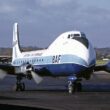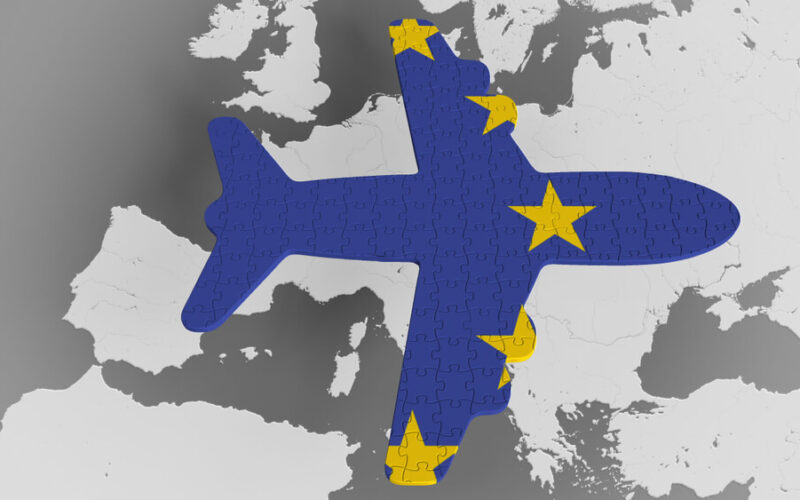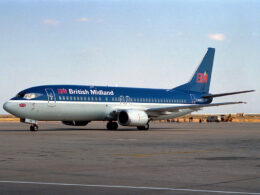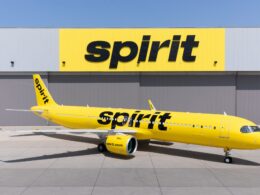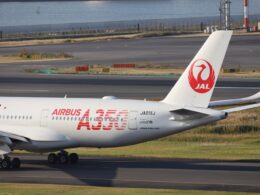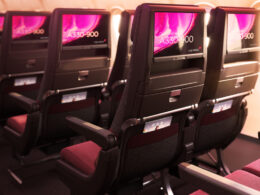While consolidation looks like a complex and long process that two or more companies undertake for one reason or another, at the end of the day, the term is fairly simple to explain: two or more business entities are combining forces either to improve their position in the market or grow quickly when it is hard to do so organically. However, the consequences of consolidation, especially within aviation, are much more complex than the term itself.
In aviation, consolidated airlines are able to grow fast and in markets where potentially they could not enter organically or would risk failing in the process of attempting to do so. The fast growth part is crucial here, as nowadays acquiring aircraft or slots for growth is no easy task, and scaling up your business to survive in such a volatile and sensitive industry is crucial.
History of consolidation within the aviation industry
Consolidation is mostly associated with the 1978 Deregulation Act that was passed in the United States Congress. Prior to the Deregulation Act, the market in the United States was controlled by the Civil Aeronautics Board, which controlled everything from fares, routes, schedules to new players trying to enter the market. While one of the goals of the 1978 law change was to ensure that prices would stay low and competition blossom, the free market utopia did not work, as evident by the current state in the United States market:
In 2018, a total of 777.9 million passengers traveled onboard a United States registered airline. Out of those 777.9 million, 576.8 million were onboard either an American Airlines (A1G) (AAL) , Delta Air Lines, United Airlines or Southwest Airlines (LUV) aircraft, according to Department of Transportation data. Meaning that the top four carriers control 74% of the market.
Consolidation signs in Europe trace even further back than 1978, prior to the establishment of the European Union or its predecessor, the European Coal and Steel Community (ECSC).
One example could be Scandinavian Airlines Systems or SAS for short. The consolidated Scandinavian carrier was born in 1951 when the flag carriers of Denmark, Norway and Sweden combined their forces and formed SAS.
In Britain, the current form of British Airways was formed in a consolidation process: British Overseas Airways Corporation was merged with British European Airways by the British Government. Two, lesser-known airlines, were also added: Cambrian Airways and Northeast Airlines. In the 20th century, British Airways further gobbled up British Caledonian (itself was a result of a takeover of British United Airways) and Dan-Air. It also added British Midland International in 2012; however, at the time BA itself was already under the ownership of International Airlines Group (IAG) (IAG).
One of the earliest and biggest mergers in the 21st century was the Air France and KLM Royal Dutch Airlines marriage, cleared by the European regulators in 2004. Air France essentially bought KLM. While the two companies operate under the same holding company, they operate independently.
The catalyst for the marriage was the ruling by the European Court of Justice (ECJ) in 2002. ECJ ruled that the European Commission had the power to overrule individual open-skies agreements between its member states and outsiders.
“In most sectors of the economy, Europe speaks with one voice in international negotiations and takes a leading role in shaping events. Until now, aviation has been excluded from this approach as Member States have pursued their own individual agendas. From now on, it is clear from the Court’s ruling that we will all have to work together in Europe to identify and pursue our objectives jointly,” said Loyola de Palacio, a Spanish politician and the commissioner of energy and transport in 2002.
Airline consolidation in Europe: current situation
Let’s come back to 2019: what is the current situation like for the market in Europe?
For starters, there are a lot of less independent airlines than previously. Let us go back to 2003, just a few months after the ECJ’s decision to overrule independent open-sky treaties.
Looking at the German-speaking market, Lufthansa (LHAB) (LHA) was independent, just like Austrian Airlines, Brussels Airlines, Eurowings and Swiss International Air Lines. British Airways did not belong to International Airlines Group (IAG) – neither did Aer Lingus, Iberia, Vueling or LEVEL – the latter did not even exist. Ryanair was just Ryanair and not a group with several other airlines.
Wizz Air was just starting out, just like Norwegian Air Shuttle was. easyJet was in the middle of switching between Airbus and Boeing aircraft, a complicated and expensive process. At the time it was a relatively small company in terms of scale compared to its fleet size today.
And then we jump back to 2019 once again:
Lufthansa (LHAB) (LHA) and its group form a five-airline company, all based around Germany and its neighbors. International Airlines Group (IAG) controls the flag carriers of Britain, Ireland and Spain, as well as two low-cost brands, namely Vueling and LEVEL. It is in the process of purchasing another Spanish brand, Air Europa – the deal is pending approval by the European regulators. Ryanair has four brands under its name: Ryanair, Buzz, Laudamotion and Malta Air.
Wizz Air has grown into a 120 aircraft-strong airline, while easyJet fleet is the triple the size of that – 334 aircraft. Norwegian Air Shuttle has disrupted the transatlantic market, a stronghold for many of the carriers mentioned previously, including British Airways. Norwegian has a base in London-Gatwick (LGW), butting heads for market share on routes between Europe and North America.
At the same time, massive growth has also resulted in massive airline bankruptcies.
Throughout 2018 and 2019, we saw such airlines as WOW Air, Air Berlin (AB1) (2017), Primera Air, Monarch Airlines, Germania, Flybmi, Thomas Cook, Aigle Azur, Adria Airways and XL Airways collapse. All of them were operating under different business models: from long-haul low-cost carriers to primarily charter/tour airlines. Seemingly, nobody is safe in the current environment in Europe.
But what is the current environment?
Price wars and overcapacity in Europe
Low-cost carriers have grown massively in the last 15 years. For one, Ryanair is now the biggest airline in Europe (as a group): the Irish low-cost carrier carried 152.4 million passengers in 2019, while the Lufthansa (LHAB) (LHA) group carried 145 million passengers. In general, LCCs accounted for 41% of the total short-haul capacity within Europe in 2018, according to a study by the Centre for Aviation. From 2009, the total capacity of no-frills airlines increased by 78%, while full-service carriers grew only by 31%.
And therein lies the problem: with emerging markets within Europe itself, namely Eastern Europe, where competition is getting tenser, customers see more demand than they actually need, resulting in overcapacity. Following the overcapacity, most airlines try to lure in their customers, especially on short-haul flights, with low prices. While companies such as Ryanair, Norwegian or Wizz Air can afford these low prices, full-service carriers cannot – simply put, their operating model does not allow them to do so.
Consolidating aircraft and slot constraints
Airlines, regardless of which type they are, need to sell more seats, as aircraft are growing due to ever-increasing slot constraints. While in the 1990s such aircraft as the Airbus A319 thrived, the A321 is the most popular A320 family product currently, judging by Airbus’ order books. The same can be said about the 737 program, as it has grown exponentially over its past iterations. In a way, narrow-body aircraft are consolidating as well, ever-increasing in their size and capabilities, including distance flown.
As airports are getting increasingly full and cannot increase their capacity, fewer new airlines appear on the route map from the airport. Let’s take London-Heathrow (LHR) as an example. London-Heathrow is not growing in terms of aircraft movements (landings and take-offs), according to Airport Coordination Limited (ACL), an organization that manages and coordinates slots in numerous airports across the world, including the United Kingdom. Initial Summer 2020 data shows that compared to Summer 2019, only 0.1% more flights will take off from Heathrow. At the same time, capacity, measured by Average Seats per Passenger Air Transport Movement, will increase by 3.2% due to bigger aircraft operating from the airport.
Furthermore, the data indicates that out of the total demand of more than 300,000 slots, only 289,000 were allocated to airlines: meaning 10% of slots that were in demand were not granted by the authority. Out of those that were not granted, 92% were denied because of runway capacity constraints.
Amsterdam, Frankfurt, Paris are also some of the examples of congestion, which enforces consolidation.
Especially since times are changing: Ryanair is increasing its capacity in Frankfurt’s main airport, FRA, rather than Frankfurt-Hahn (HHN); easyJet primarily flies from Paris-Charles De Gaulle (CDG), rather than Orly Airport (ORY) or Beauvais-Tille Airport (BVA), albeit it does operate routes from ORY. These are just some of the examples how low-cost carriers are turning towards primary airports.
Price wars are also getting spicy, especially where low-cost carriers meet Lufthansa Group airlines. For one reason or another, Lufthansa Group CEOs are not particularly fond of low-cost carriers:
The CEO of Lufthansa (LHAB) (LHA) , Carsten Spohr called the low-cost model “economically, ecologically and politically irresponsible,” adding that flights for €10 should not exist. The CEO of Austrian Airlines, Alexis von Hoensbroech, directly and publicly told Ryanair’s CEO Michael O’Leary that he “is wrong if he thinks that he can overtake us here in Vienna,” as Ryanair is expanding massively in the city with its Austrian subsidiary Laudamotion.
Thus, where a lot of airlines are trying to compete for passengers, the smaller players lose out. But what are some of the ways that airlines can consolidate?
Acquisition – Air Europa by IAG
One of the latest examples of an acquisition was International Airlines Group’s (IAG) purchase of Air Europa for 1 billion euros in November 2019. In short, but sweet manner, IAG acquired a carrier that directly competes with its Spanish airline, Iberia. However, Air Europa mostly focuses on transferring passengers between Europe and South America ‒ a key market for Iberia and Spain in general.
Air Europa was no small player, not only judging by the price tag but also a fleet of 66 aircraft and 11.8 million passengers carried in 2018. Since Air Europa would eventually be integrated into Iberia, the latter would essentially dominate the transatlantic market from Spain and be a formidable force together with IAG on the West Europe – North and South American markets.
Of course, intra-European travel would also be affected. After all, Spain is a very popular tourist destination and the fact that two Spanish brands are essentially consolidating into a bigger unit would allow them to throw out their elbows and push around competition as they please.
Merger – British Airways and Iberia to form IAG
After a failed takeover in 2007 and a difficult period in 2008-2009 due to the financial crisis, British Airways and Iberia decided to sign an agreement to merge in late 2009, completing the move in early-2011.
What a merger allows for airlines such as British Airways and Iberia is to mutually benefit from their networks. So, for example, if British Airways is strong in the transatlantic market to North America, Iberia can benefit from London-Heathrow’s hub connectivity, while British Airways can use Madrid and Iberia’s South American transatlantic connections. Furthermore, following a fairly difficult period, the airlines can combine their forces under one holding to strengthen their revenue and liquidity.
While the biggest of costs for airlines are fuel, airport charges, aircraft acquisition and staff wages, such costs as maintenance, various IT procedures (like in-flight entertainment) and loyalty programs can be done cheaper when combining forces. Combining loyalty programs, as IAG did with Avios, helps the group acquire customers and then keep them in the long-term throughout their various airline brands.
Even aircraft acquisitions can, theoretically, become cheaper. If such a group as IAG orders a massive bulk of aircraft, manufacturers potentially can offer significant discounts to the massive order.
Takeover – Virgin Atlantic via Connect Airways taking over Flybe
The most recent and a fairly controversial takeover example is Cyrus Capital Partners, Stobart Airways and Virgin Atlantic-formed consortium Connect Airways taking over Flybe, the regional airline based in the United Kingdom. With Flybe barely limping on in late-2018 and early-2019, Virgin Atlantic found itself several partners to take over the struggling carrier for a measly sum of $2.8 million (£2.2 million).
For one, Flybe would offer Virgin (VAH) something it has attempted previously – an airline that connects its passengers to its key international hubs in London-Heathrow and Manchester Airport. With the incoming rebranding to Virgin Connect to better reflect the values of the Virgin (VAH) brand, Flybe’s future seemed like it was secured.
Yet, curiously, Flybe almost collapsed again at the start of the year, raising a few eyebrows and questions: how could a carrier, which was just taken over, could once again be on the brink of collapse? The measures taken by the British Government to prevent the closure of Flybe sparked outrage from competitors, including Ryanair and IAG bosses.
Effects of consolidation upon the passenger and regional airlines
While there are quite a few benefits for airlines to consolidate into bigger groups, for passengers it usually means no good. Consolidation means less competition and that in turn means that airlines are less inclined to offer what is best for passengers, like price or the experience onboard. The legitimacy of airline ratings by passenger experience can be questioned, but they do provide a basis on which it is possible to measure expectations.
The big three full-service carriers within the United States, namely American Airlines (A1G) (AAL) , Delta Air Lines and United Airlines, placed 74, 41 and 68, respectively, in Skytrax’s top 100 airlines list of 2019. A year prior, the Big Three placed 71, 37 and 88, respectively.
Of course, there are good sides to consolidation. The usually unstable nature of carriers is stabilized within a bigger holding. While in theory, even the biggest airlines can fail, the bigger you get, the less chance you have of going down under unless quite a few things go against you as an airline. The best example here would probably be Pan American World Airways, which closed its doors in 1991.
With stability comes passenger confidence: they know that the tickets they book are not going to suddenly stop being valid due to an unforeseen bankruptcy.
Bullying the small boys around
In a way, for regional airlines consolidation means that the bigger groups come after their side of the business. One example could be Adria Airways that collapsed in the fall of 2019. With most of its non-Balkan routes connecting Slovenia and countries like Austria, Belgium, Germany and Switzerland, its main competition was Lufthansa (LHAB) (LHA) and the group’s airlines based in the aforementioned countries. While Adria had loads of other issues, the competition from Lufthansa (LHAB) (LHA) did not help it either. The German airline group was theoretically able to bully the regional airline on its routes from Ljubljana, the Slovenian capital, even if it did lose money. Its losses on the Slovenian routes were covered by gains on other routes, including long-haul ones, but Adria had nowhere to go: after all, its main goal was to connect Slovenia with the outside world.
However, the word theoretically here is crucial, as Lufthansa (LHAB) (LHA) was in the same airline alliance as Adria. It was actually beneficial for the German airline group for the Slovenian carrier to keep running, due to the nature of alliances and codeshares. Lufthansa (LHAB) (LHA) could offer its passengers more flexibility with ticket times and destinations without operating the flights themselves, cutting on costs.
Nevertheless, the theory applies greatly throughout Europe: small regional airlines simply cannot compete with consolidated businesses that are able to offset losses elsewhere. They are stuck between a rock and a hard place, with little room to wiggle.

